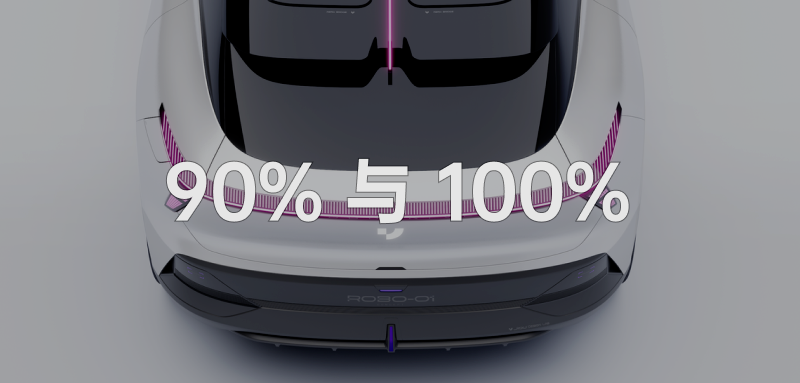Last Wednesday, Jidu got quite popular within the industry. I watched the entire event that night, and my feelings towards the “launch event” itself were similar to most people’s. So much so that when Jidu’s official personnel asked me for suggestions after the event was over, I wrote a lot of them before hesitating and deleting half before sending. The main reason I had such an attitude towards this “metaverse launch event” was that while it was an event with a lot of information, and the new vehicle was indeed a noteworthy product, the event’s format and some excessive operations distracted everyone’s attention. This is somewhat similar to this year’s Oscars – almost everyone was focused on why Will Smith was punching people, and this event has almost drowned out the other information about this film festival. In my opinion, this is very regrettable, given that since it is a new car launch event, cars should be the most important protagonist.
So let me get right to the point. Although there will be a lot of comments on the metaverse and Jidu’s launch event in this article, the focus is still on cars and intelligence, which we have always been paying attention to.
What is the most important part of a launch event??
If you were to ask me what the most important part of a car launch event is, I would have two answers in my mind. Firstly, it’s about clarifying the price so that consumers know how much it will cost. And secondly, the unveiling of the car, which is an even more important part, allows everyone to see what the long-awaited new car looks like.
This is called “unveiling the car” because in my opinion, the first meeting between a heavyweight product and consumers should be like a wedding ceremony, with a grand ceremony and carefully prepared mystery, and then the bride appearing in the best state prepared for the eyes of everyone in the audience.
An launch event that can excite people and give them a sense of anticipation is often the beginning of a product’s success. As for Jidu’s launch event, the “bride” itself actually has this quality.
The Seller’s Show That Was Supposed To Appear
Jidu’s ROBODAY was teasing its concept car launch event earlier, so the price didn’t matter. The focus of the launch event was on the new car’s appearance, and Jidu’s new car ROBO-01 looks like this:
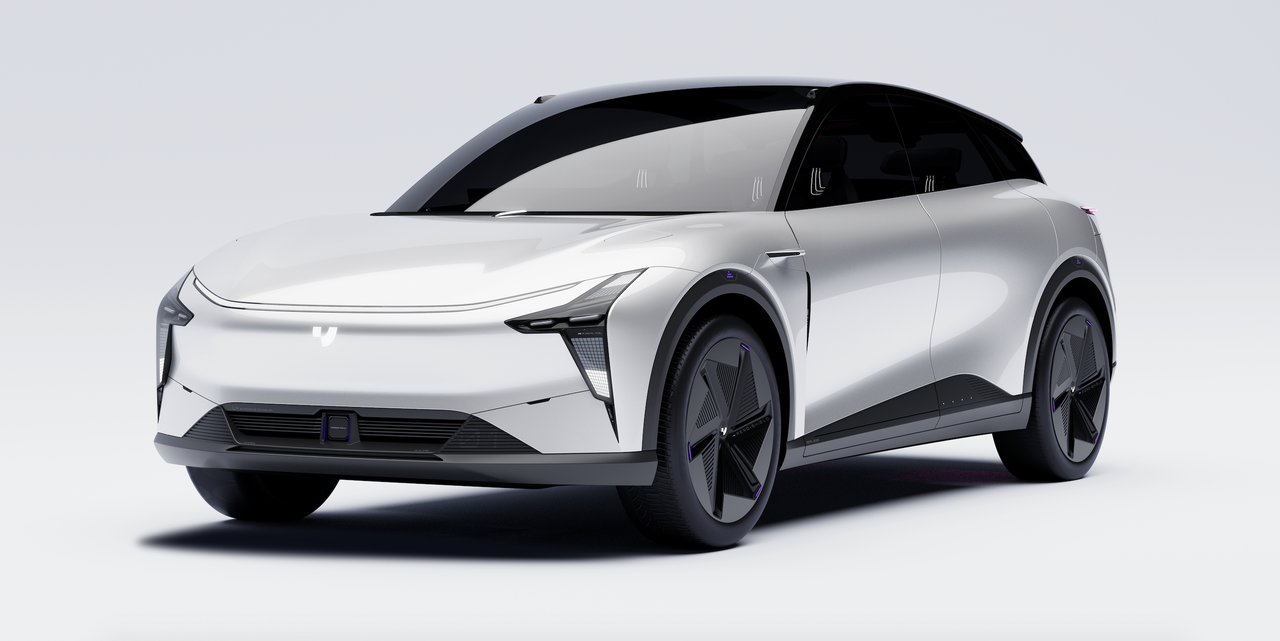
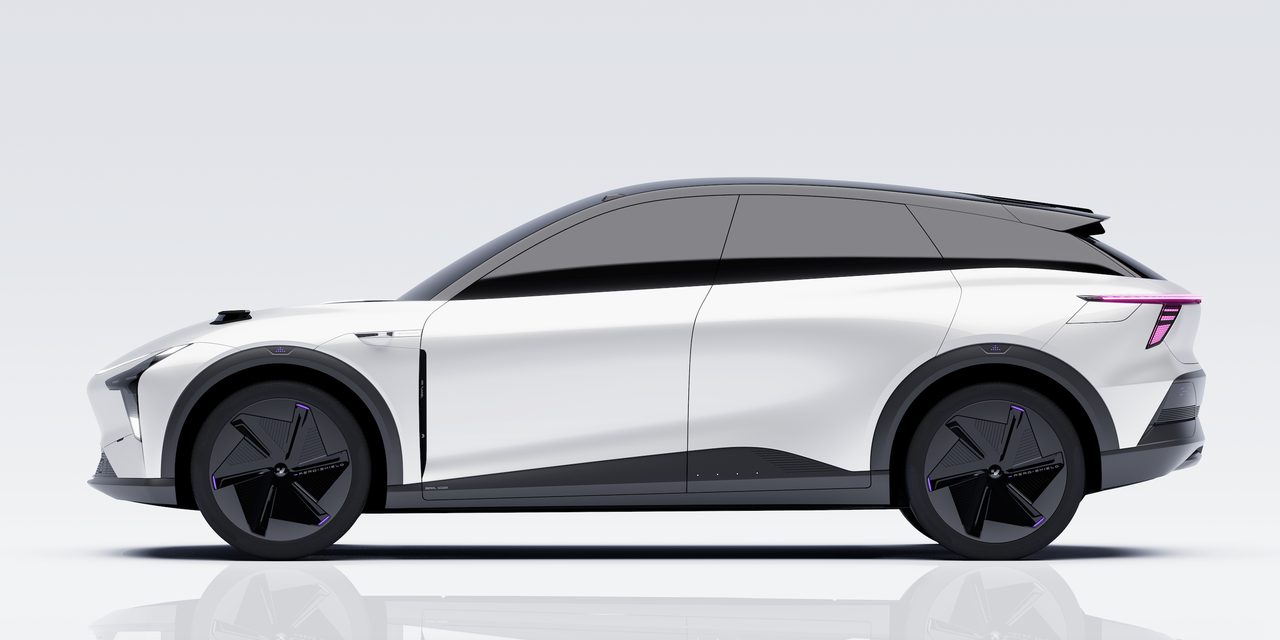

This is what the ROBO-01 concept car looks like in real life: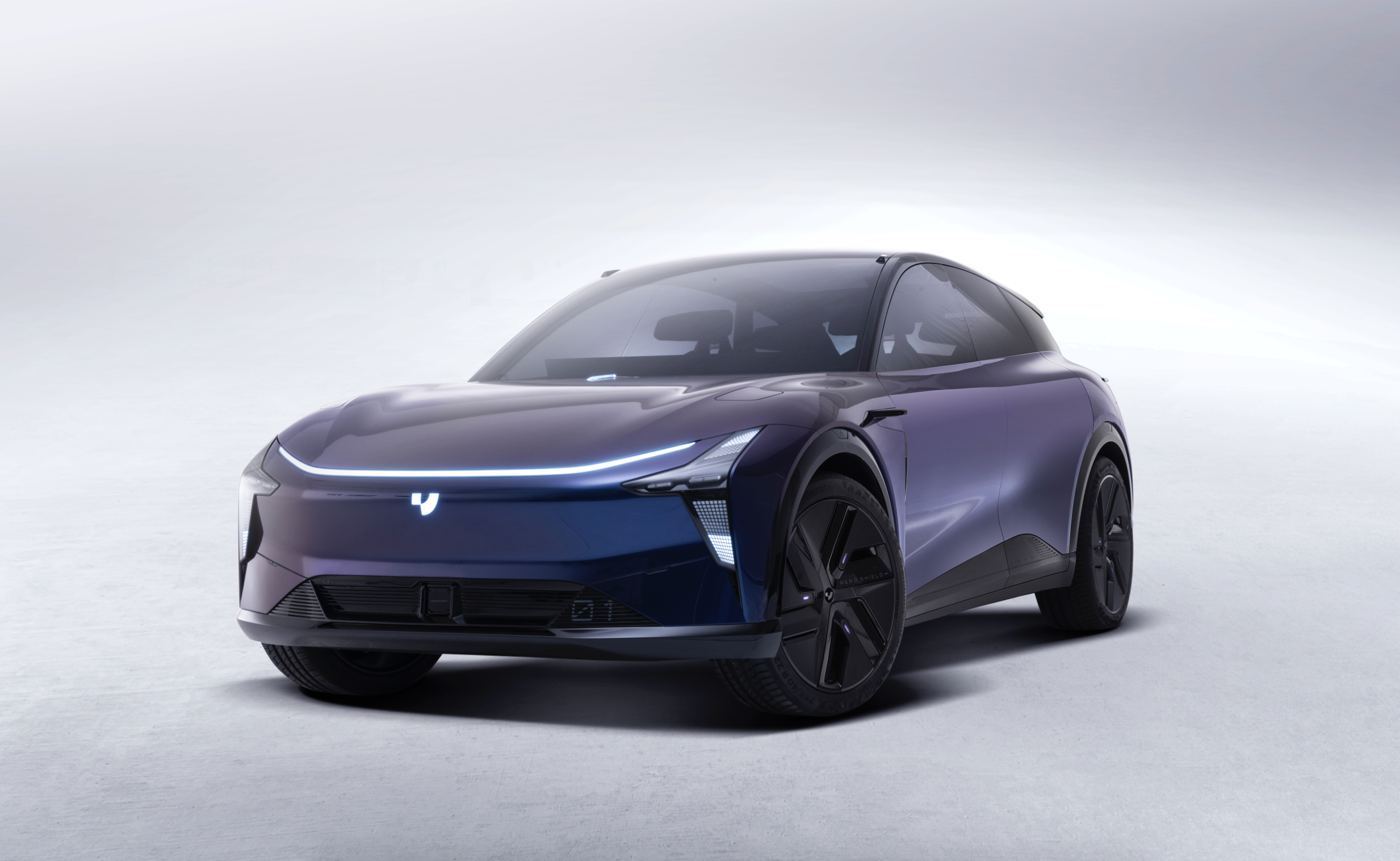
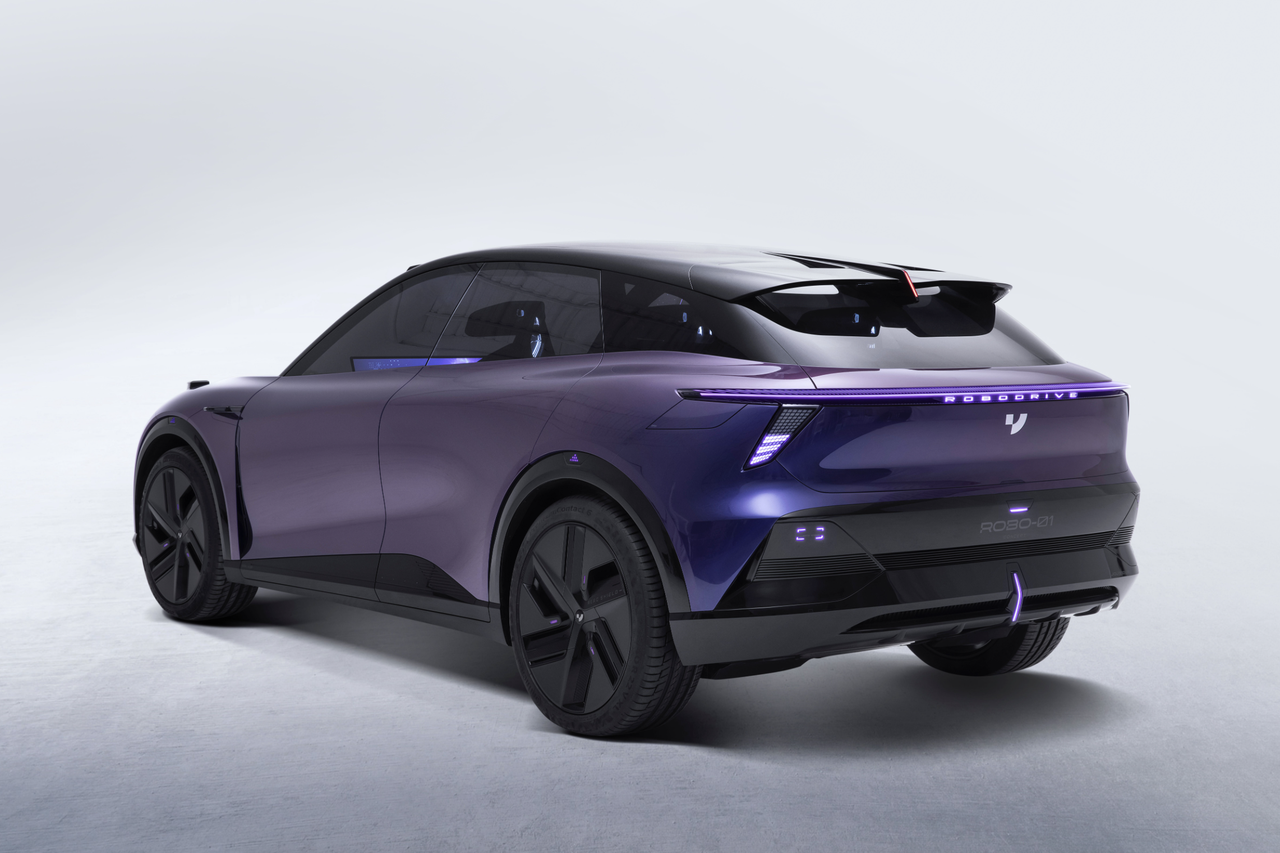
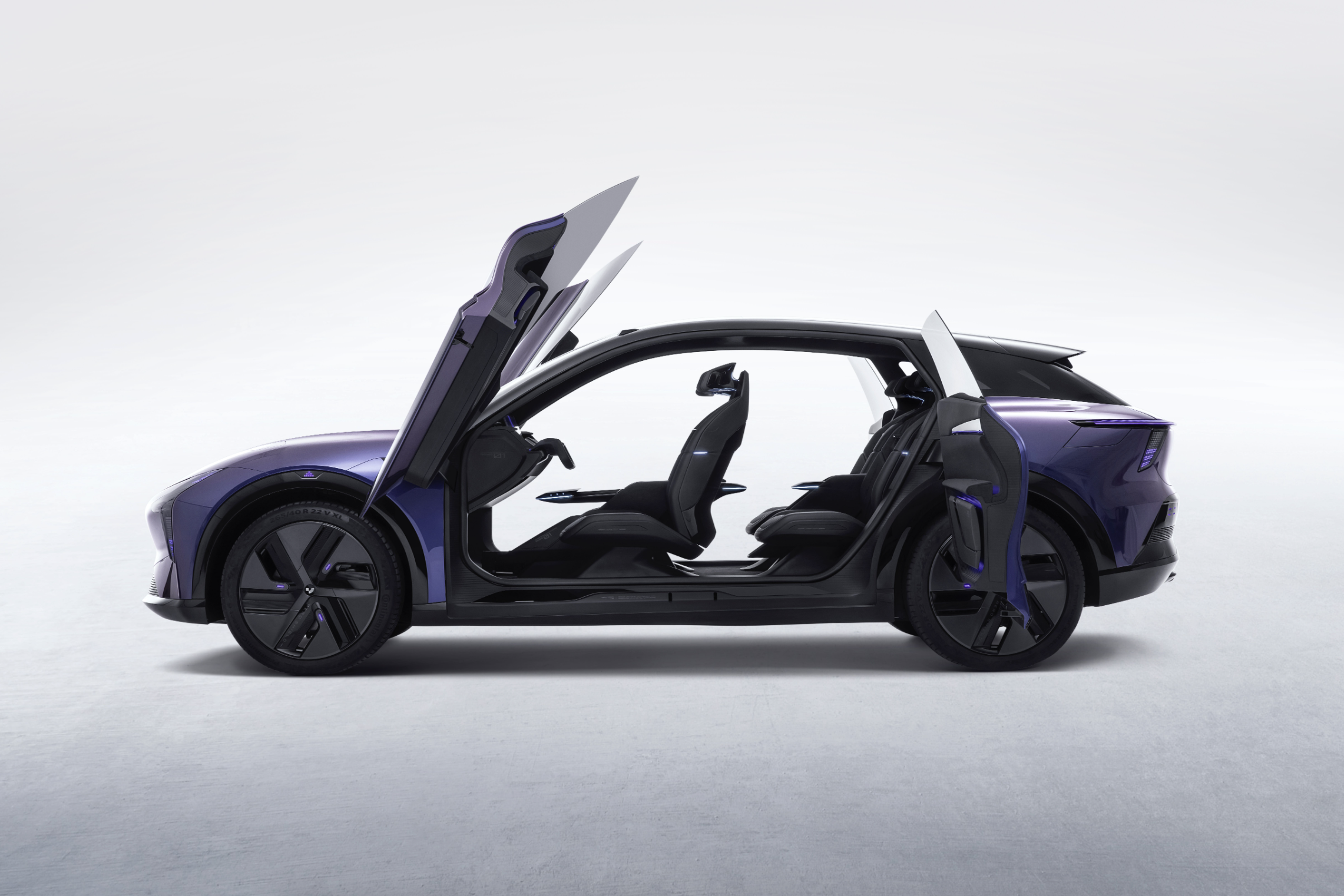
The design of the ROBO-01 follows the trend of the “new forces” style, pursuing clean lines, low wind resistance and a sense of technology.
As the saying goes, appearance reflects inner qualities, and this is especially true in car design. From elements such as the enclosed front grille, through-type light strip, closed low wind resistance wheels, hidden door handles and electronic rearview mirror, readers who haven’t learned about this car beforehand should be able to guess that it is a pure electric car just by looking at the exterior.
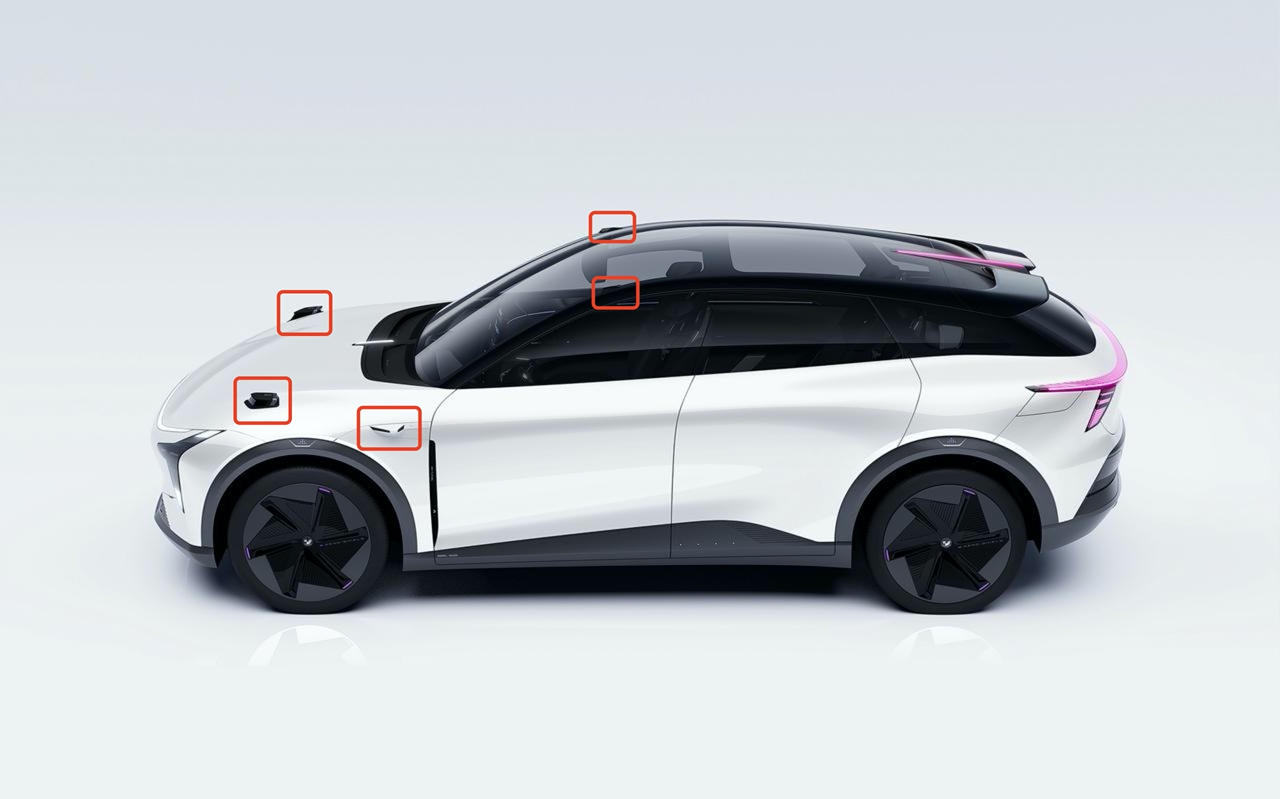
If you look closely, you will notice the lidar on the hood, the rearview camera module on the fender and the camera on top of the A-pillar, which should make it clear that this is a car with advanced intelligent driving capabilities.
If you still haven’t noticed anything unusual during this process, then the first goal of the design has already been achieved – to minimize the impact of exposed intelligent driving perception hardware on the overall aesthetics of the car. Xia Yiping also mentioned this in a subsequent interview, stating that this principle was achieved while balancing the wind resistance of the vehicle and the production capacity of the program within a three-party framework, and that the engineering and design departments at Jietu have been working together during this development stage.
Overall, the ROBO-01 concept car looks good, with its proportions, color schemes, wheels, rear design and even the Jietu logo – which had received negative feedback from the public previously – blending well into the car’s overall visual effect.
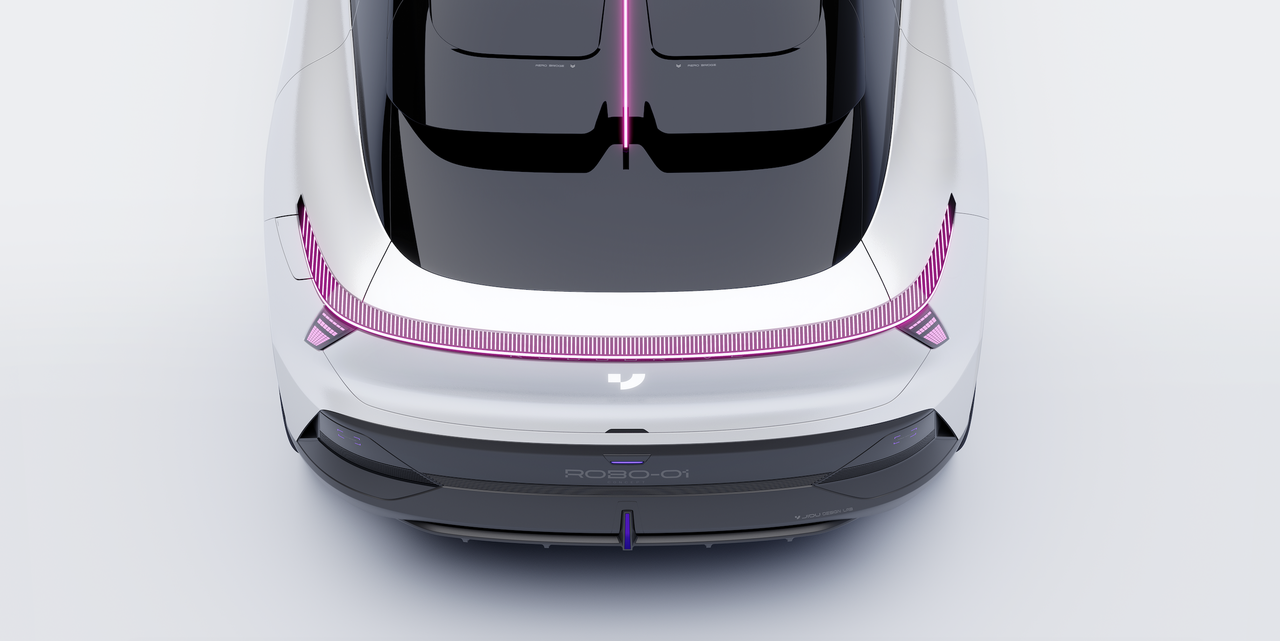
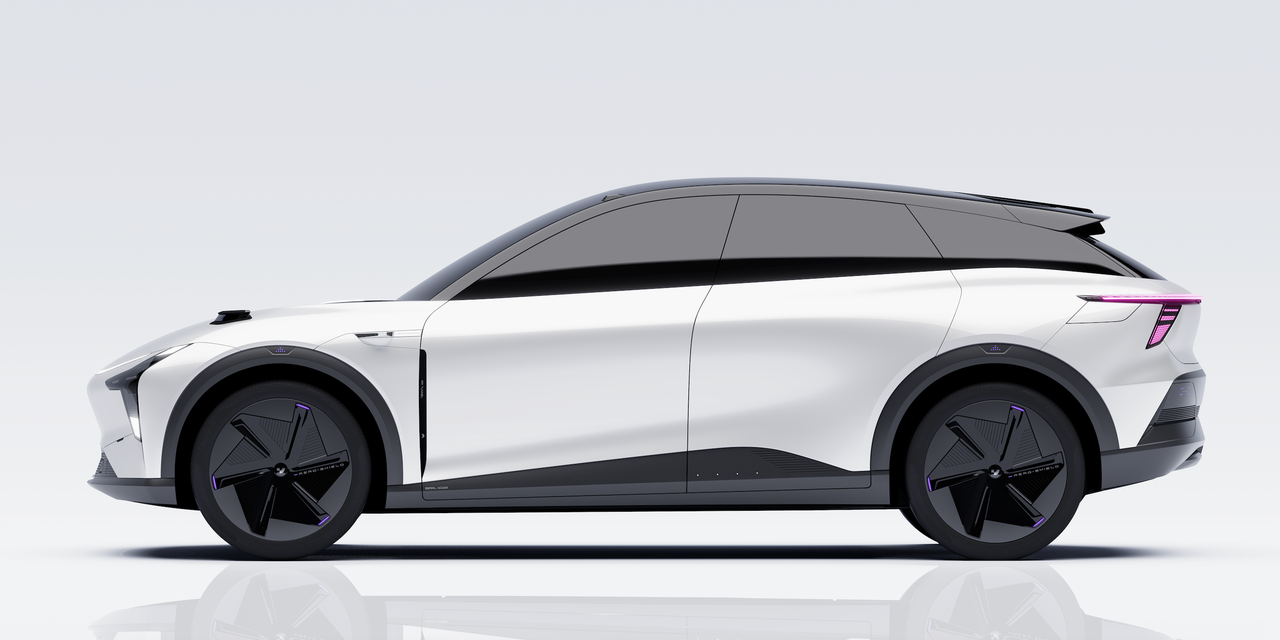
Features such as tail lights, high-mounted vertical brake lights, two-part split rear wings, and lower side skirts not only look good on their own, but also contribute to the overall sense of the car.
Regardless of aesthetic preferences based on different design themes, the ROBO-01 is still a poised and attractive SUV in terms of both appearance and feel.The part that I’m not quite satisfied with is that the front face of the car is still caught in the “two glasses of poison” dilemma that few people in the electric car circles can escape from nowadays: the element of high recognition, such as headlights and front grille, has begun to rapidly homogenize among electric cars, as different manufacturers’ design logic behind considerations such as air resistance and safety regulations are more or less the same, and the differences between solutions ultimately lie in the allocation of different emphasis on the above considerations; as the industry matures, the trend of homogenization becomes more pronounced.
Therefore, the later-comers, the less room they have for differentiation in design. They can either do well in engineering, regulations, and air resistance, compromise on a part of recognition in design and enter the “homogenization” circle, or take a different approach and invest more energy in creating their own recognition, but other aspects undoubtedly face more work and challenges, while also striving to make consumers who have been under the continuous influence of “homogenized design” accept this “strange” design.
Looking back on several recent new cars, in the “two glasses of poison” that the industry and consumers jointly held up in the electric car design circle, IM and Avita, both of them being later-comers, drank the latter glass, while Jidu drank the former glass.
However, this is not the main reason why Jidu was criticized last night.
The Actual Car is Necessary
In fact, the previous high-quality rendering and real shot pictures are not promotional materials for the conference. What everyone saw in the Xilang App during live streaming was basically like this:
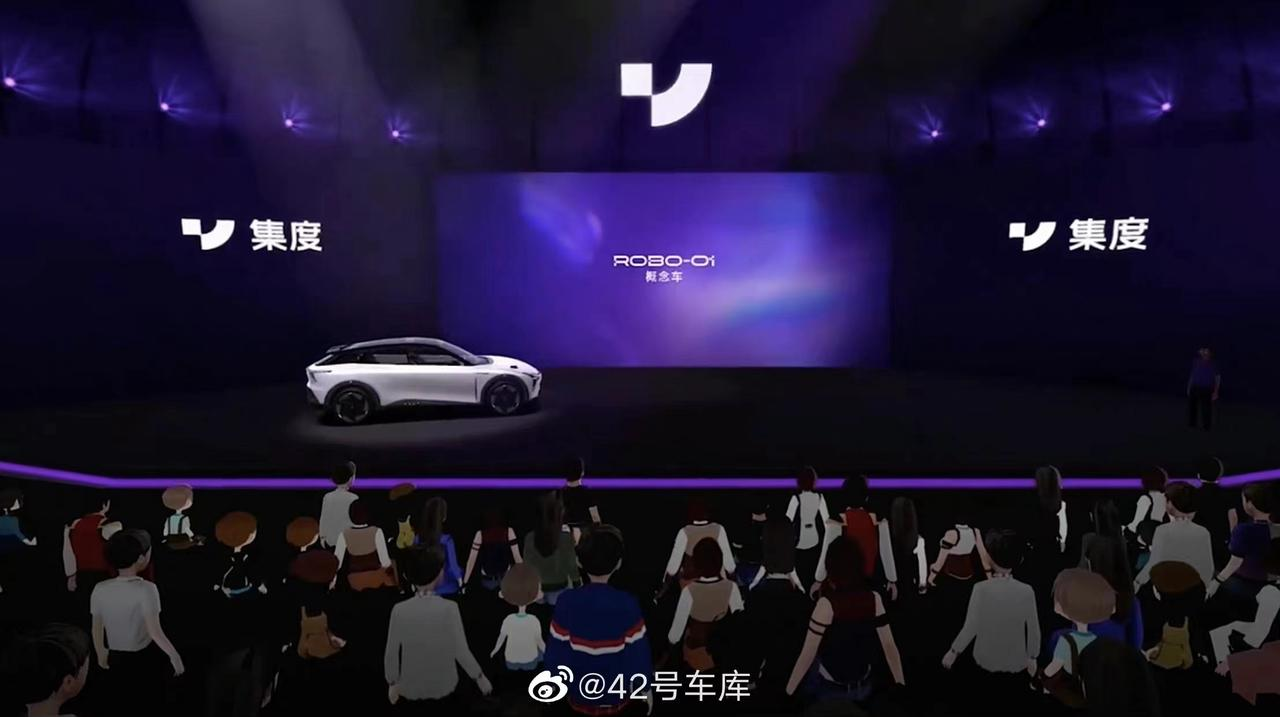
Like this:
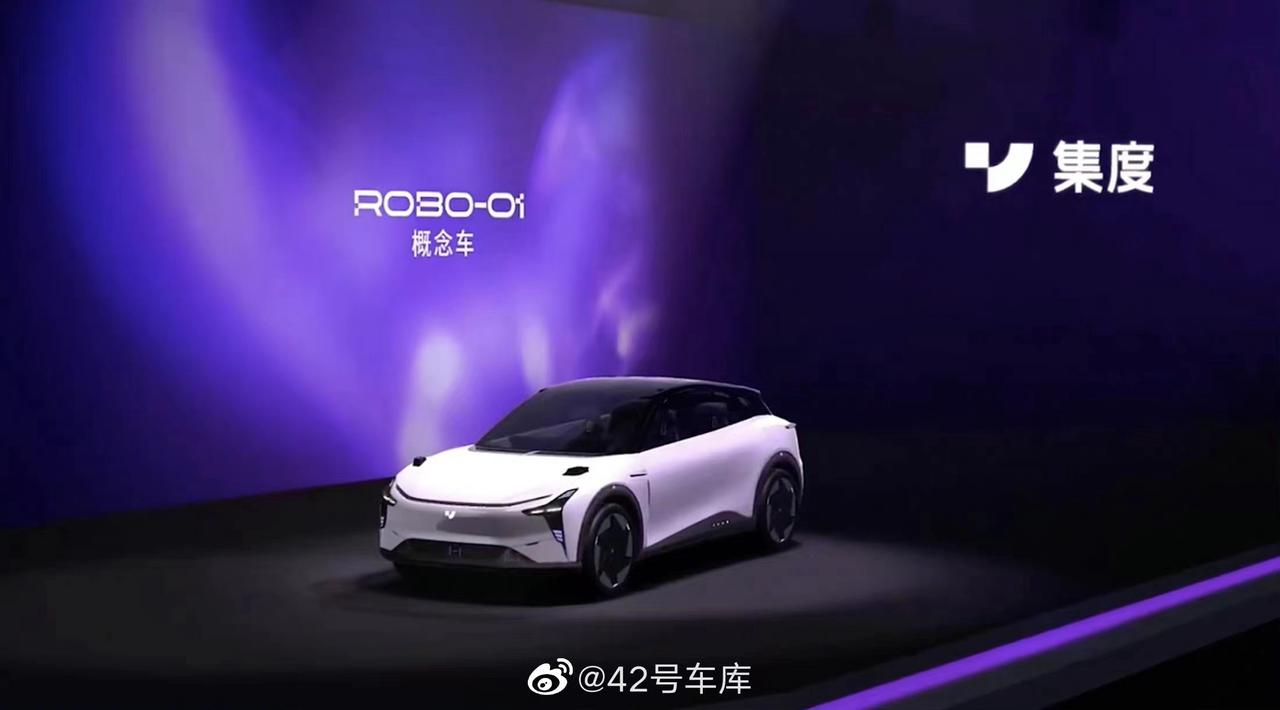
And this:
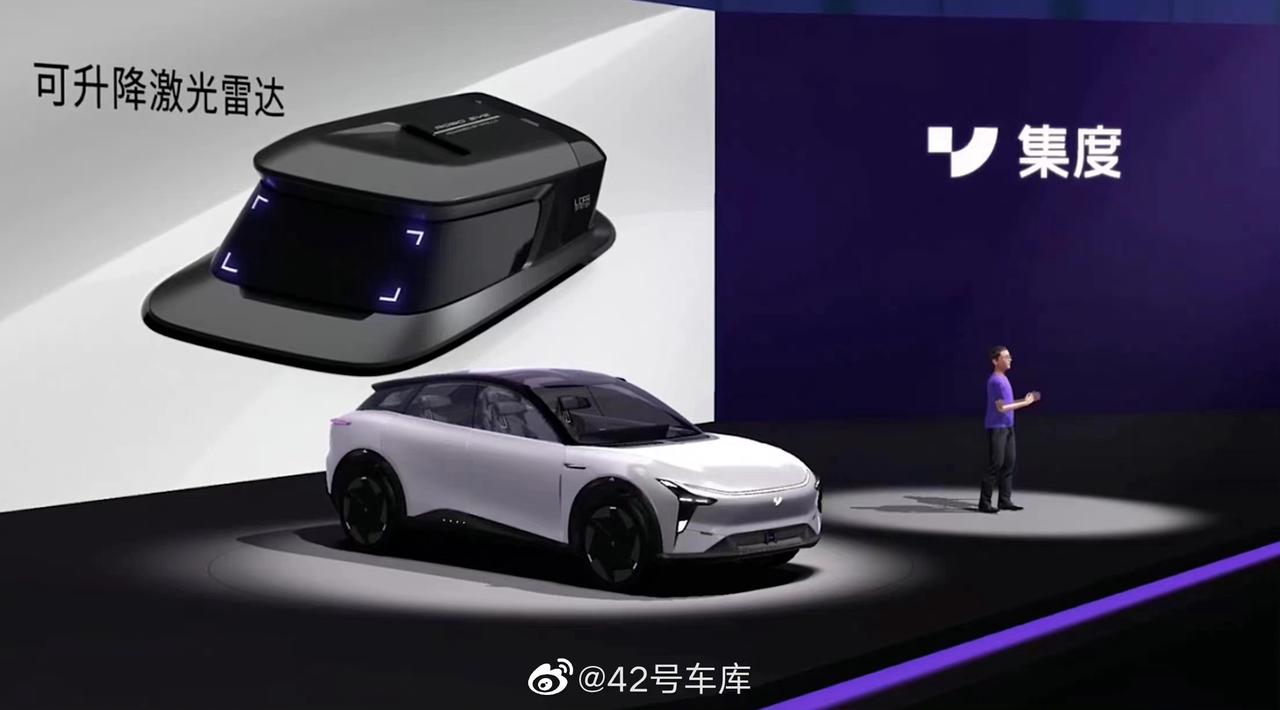
Yes, the most important “unveiling” segment that everyone saw during the conference was a ROBO-01 render 3D model, which may be similar to the feeling of the central control screen in everyone’s Model 3/Y. And these two screenshots are already the ones with the better effects.
The purple figure beside the car is Xia Yiping’s Metaverse image during the conference.
On the day of the conference, the live-stream audience saw a digital model that lacked the unique charm of a car. The public opinion was very straightforward. Without the actual car on stage, this modeling effect in the Metaverse cannot provide any visual feedback on the size, paint reflection, three-dimensional sense of shape, and overall posture of the car that everyone who cares about this car needs.
Perhaps in a situation where there is more time available, the rendering and modeling during the conference will be more refined, but it cannot be denied that the lack of direct visual feedback from the physical object is one of the main sources of the problem.
Interior for Mass Production and Non-Mass ProductionNow that everyone knows why the Jidu Auto launch event was criticized, I will continue to use renderings and other materials that evoke a sense of longing to introduce the interior of the ROBO-01.
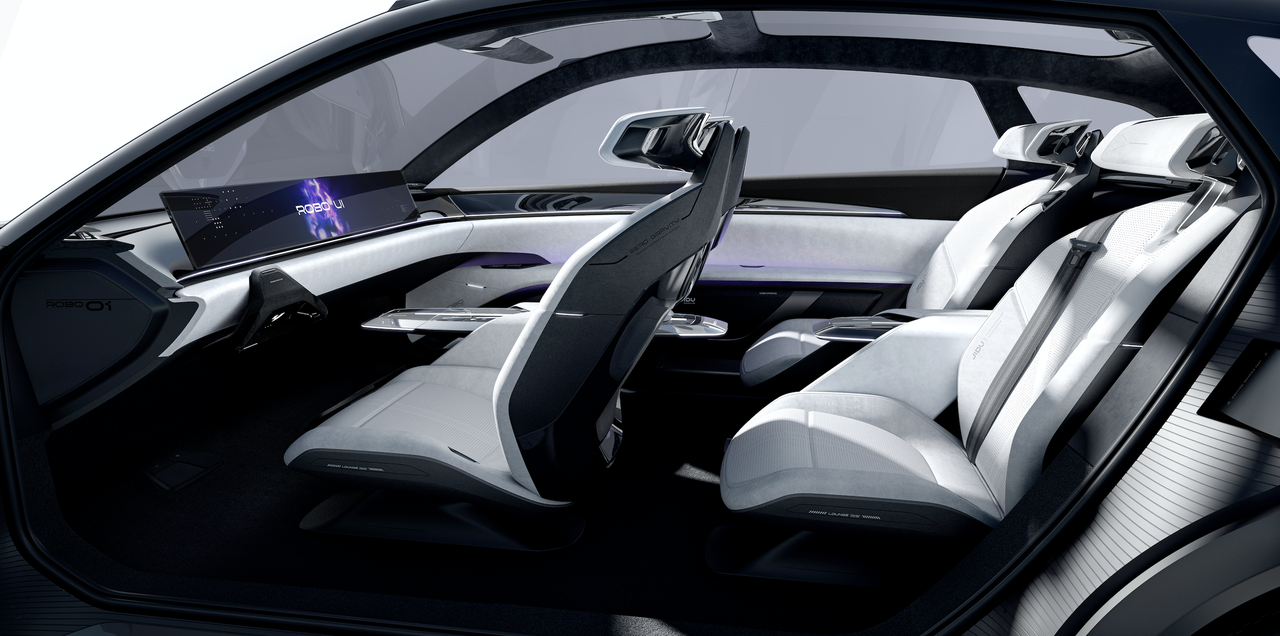
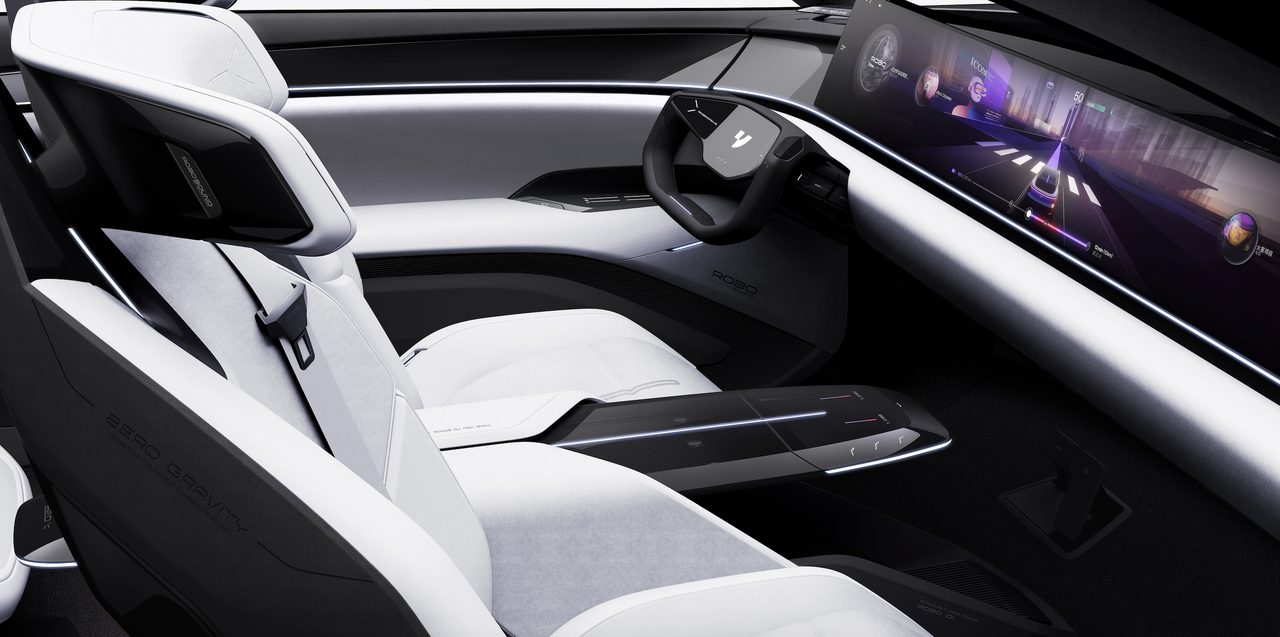
Compared to the exterior, the interior of the ROBO-01 concept car has many designs that seem to only exist in the exhibition stage at first glance. One of the most discussed designs is the absence of a B-pillar structure. What pushed this design to the forefront of attention was Xia Yiping’s statement at the launch event that “the production version of the ROBO-01 will have over 90% similarity with the concept car.”
To be honest, the controversy that resulted from this statement surprised me because this type of design has already appeared on countless concept cars and is considered to be a “common solution” in the concept car circle.
The reason behind this is actually quite simple: omitting the B-pillar from the soft model car used for styling display requires less work, and the absence of a B-pillar also makes it easier to showcase the interior of the vehicle when the doors are opened.
Other features, such as the single-pillar connection mechanism for the seats and the special-shaped cupholderless central armrest on the body, are also commonly seen in concept displays and can be understood as “display items” for exhibition vehicles.
Generally speaking, when discussing whether a car will be mass-produced, design elements that are purely for display purposes, such as door structures, are not usually taken into consideration. After all, some concept cars can’t even open their doors. So, Xia Yiping’s statement about the 90% similarity is mostly referring to the overall design of the vehicle. The three main focus points related to the “90%” for the entire interior of the ROBO-01 are:
-
Screen
-
Steering wheel
-
Disappearing physical buttons
Regarding the screen that was showcased at the launch event, here is a quote from Xia Yiping in an interview:
The large screen is essentially the same design as the production version.
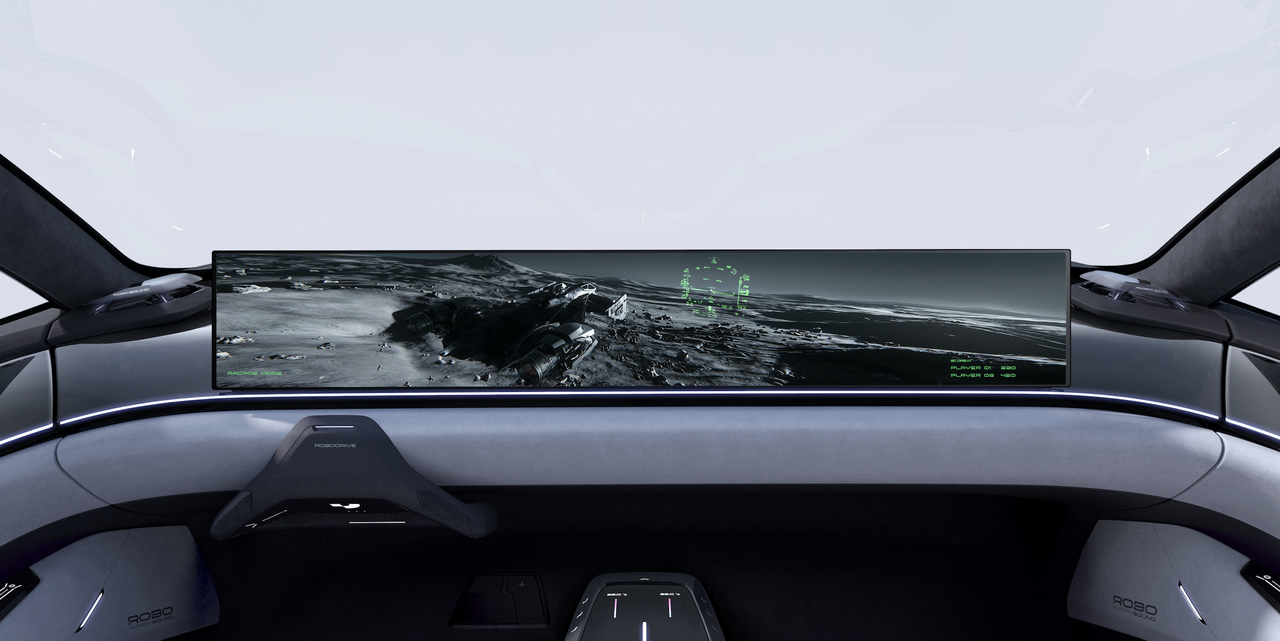
When I heard this statement, I was quite surprised because we have already seen similar solutions on other concept cars over the years, but Jidu Auto was the first to commit to mass produce it.
It is costly to develop a screen that is integrated into the manufacturing process. Adding the phrase “vehicle regulation level” to it, I can already sense the challenges that the screen has gone through at Jidu Auto and its supplier throughout the development process.The concept of this screen is actually very intuitive — it turns the popular three-screen solution of instrument panel + central control + co-pilot screen into a seamless design, similar to the concept design exhibited by Apple at the WWDC a few days ago. This narrow-edge, full-screen design not only effectively increases the display area, but more importantly, looks much better visually. As Xia Yiping said at the press conference, “The multi-screen with some borders that can run horses is not what Jidu pursues.”
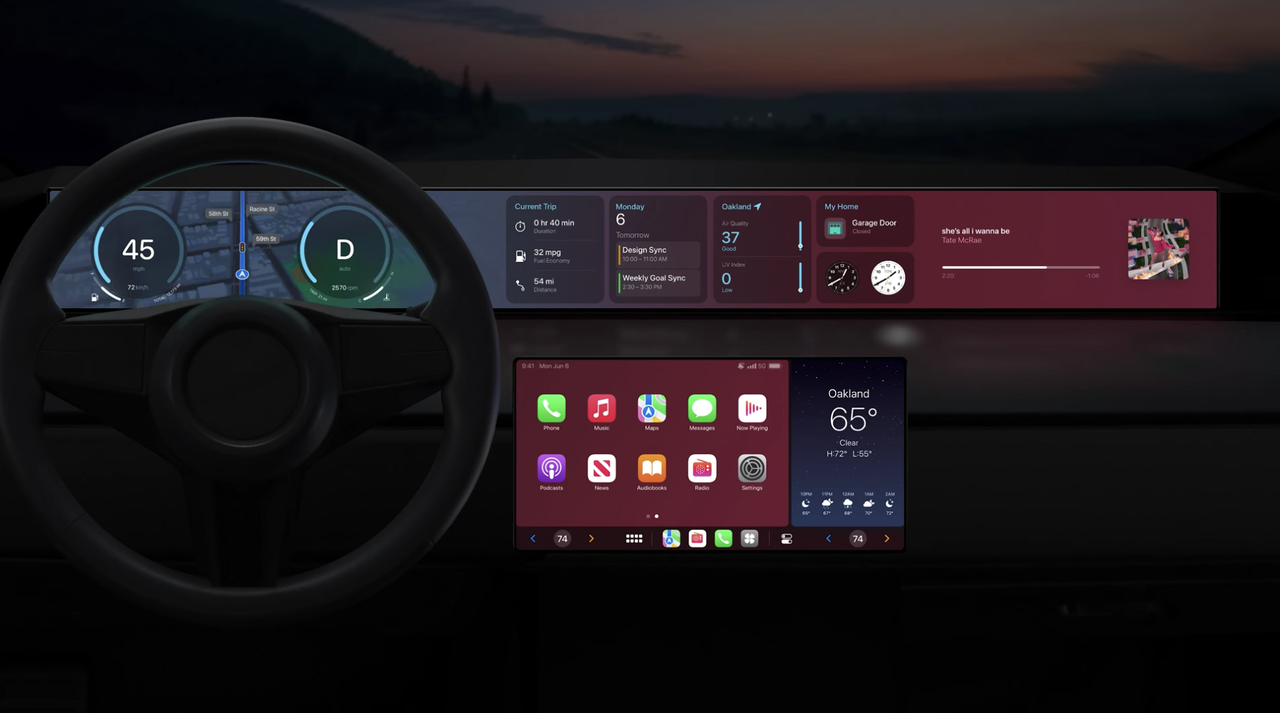
However, there is one thing about Apple’s image that bothers people with OCD: the upper half of the steering wheel blocks the sides of the instrument panel. This leads us to the second key design point of the ROBO-01 interior — the half-cut steering wheel.
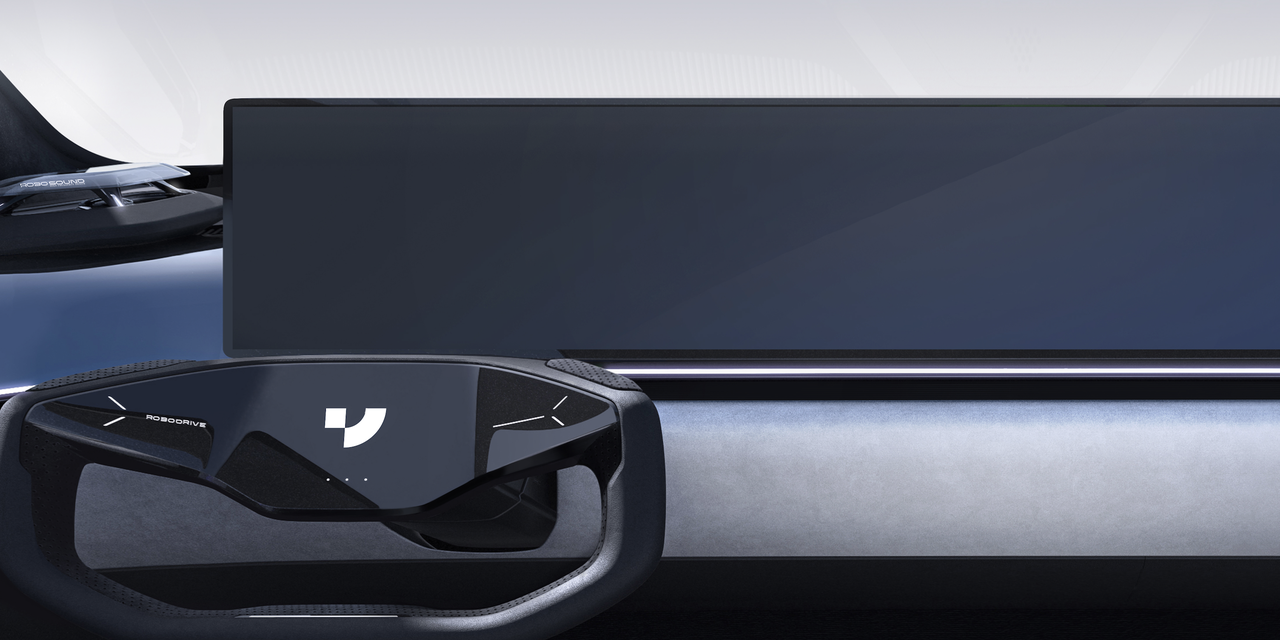
Before we unfold the design, let’s answer a common question: is this type of steering wheel compliant with regulations? The answer is that there are no current regulations on steering wheel style in China, so regulations are not a concern if it goes into mass production.
The most famous car model that uses a half-cut steering wheel is the Tesla Model S/X. Compared to the traditional circular steering wheel, the main disadvantage of this alternative steering wheel is that it is not very convenient for large steering operations. Unless equipped with a variable steering ratio line control mechanism, the driver will have to gradually adapt to it.
Xia Yiping customized a “Yoke” steering wheel for his own Tesla, and after a few months of use, he agreed with many real users that the half-cut steering wheel can provide better driving visibility, but sacrifices convenience in low-speed scenarios.
Here, Xia Yiping gave an interesting example: his wife complained about this inhuman design the first time she used it, but after a week of use, when Xia Yiping switched the car back to a circular steering wheel, his wife felt that the half-cut steering wheel was more suitable again.
After telling this story, the design of the mass-produced ROBO-01 steering wheel is also hinted at.
Currently, the Lexus RZ is equipped with a line-control half-cut steering wheel with variable steering ratio. In an interview, Jidu officials stated that this is the next-generation solution that is already in preparation, which will not only improve steering experience, but also integrate with the higher-end intelligent driving.
 The final step in the interior design process is the almost disappearance of physical buttons. It is not uncommon for new models with good screen UI and touch interaction to have fewer physical buttons. Nowadays, voice interaction has also become a common feature for new users, so I was not excited when Jidu introduced this concept at the launch event.
The final step in the interior design process is the almost disappearance of physical buttons. It is not uncommon for new models with good screen UI and touch interaction to have fewer physical buttons. Nowadays, voice interaction has also become a common feature for new users, so I was not excited when Jidu introduced this concept at the launch event.
However, Jidu took it one step further and introduced full offline voice recognition.
Users who have experienced signal-free environments such as underground garages and tunnels and were unable to use voice control will understand the significance of this feature. While other companies have offline voice recognition, the aspect of full offline and instant response time is another level.
With the integration of the unified screen, half-cut steering wheel mentioned earlier, and full offline voice recognition, the ROBO-01’s interior design is less homogeneous than its exterior. Its design also follows the style of simple technology.
When I saw the state of the Metaverse at the launch event, I once doubted Jidu’s team’s aesthetics. However, after seeing the renderings and the answers to several design and experience-related questions during the interview section of the event, Jidu officials dispelled my doubts. The CEO who was willing to try the half-cut steering wheel himself and conducted a “comparison experiment” with his wife is clearly someone who is daring enough to try new things and values practical feedback based on real experiences.
Jidu, LiDAR \& Apollo
Intelligent driving is undoubtedly a crucial battlefield in the domestic intelligent automobile industry. The ability of intelligent driving is not only an essential consideration for C-end consumers when purchasing vehicles, but also an important indicator of a company’s strength in external presentations.
Jidu’s website describes the company as follows: Jidu is an automobile robot start-up company initiated by Baidu and strategically invested by Geely. As for what Baidu and Geely represent to consumers, they only need to know two things: Apollo and the SEA Haohan Platform.
I don’t think I need to go into detail about Apollo, which is the core endorsement of Jidu in the field of intelligent driving. Regarding the difference between unmanned driving with Apollo and mass-produced car development, Xia Yiping said:
It can be understood that we use Baidu’s atomic core technology capabilities, including voice, maps, intelligent driving, and Robotaxi. However, we adjust some technical details, such as the order of algorithms in automated driving, or the combination of front and back, through technical adjustments, which can create an experience more suitable for pushing and facing C-end products. This is what we are doing.
Returning to the ROBO-01 car, let’s continue looking at some key points revealed at the launch event.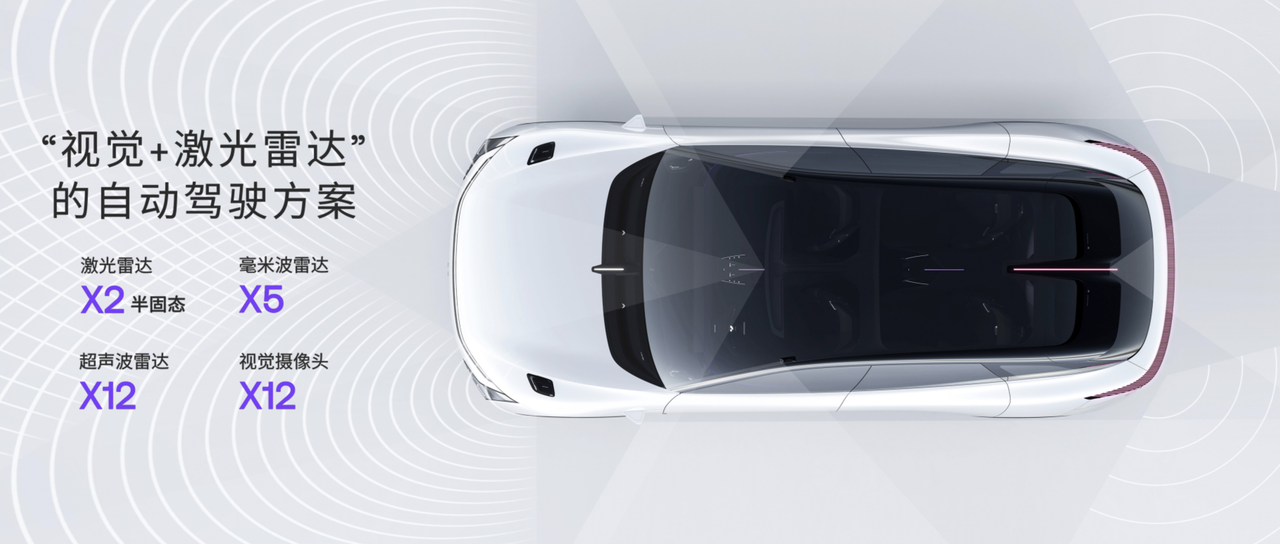
On hardware parameters, the core components of ROBO-01 include:
-
Two Orin-X chips;
-
Two Velodyne AT128 semi-solid-state LiDARs;
-
Seven 8-million-pixel + four 3-million-pixel + one 2-million-pixel visual systems;
-
Five millimeter-wave radars.
The configuration of the surround-view ADAS system, computing chips and LiDARs in recent new cars belongs to the first-tier level. The Velodyne AT128 has also appeared in the Ideal L9. As for the placement of LiDARs, Li Xiang and Xia Yiping have expressed different opinions in our Weibo comment section. Xia Yiping mentioned this issue again in an interview.
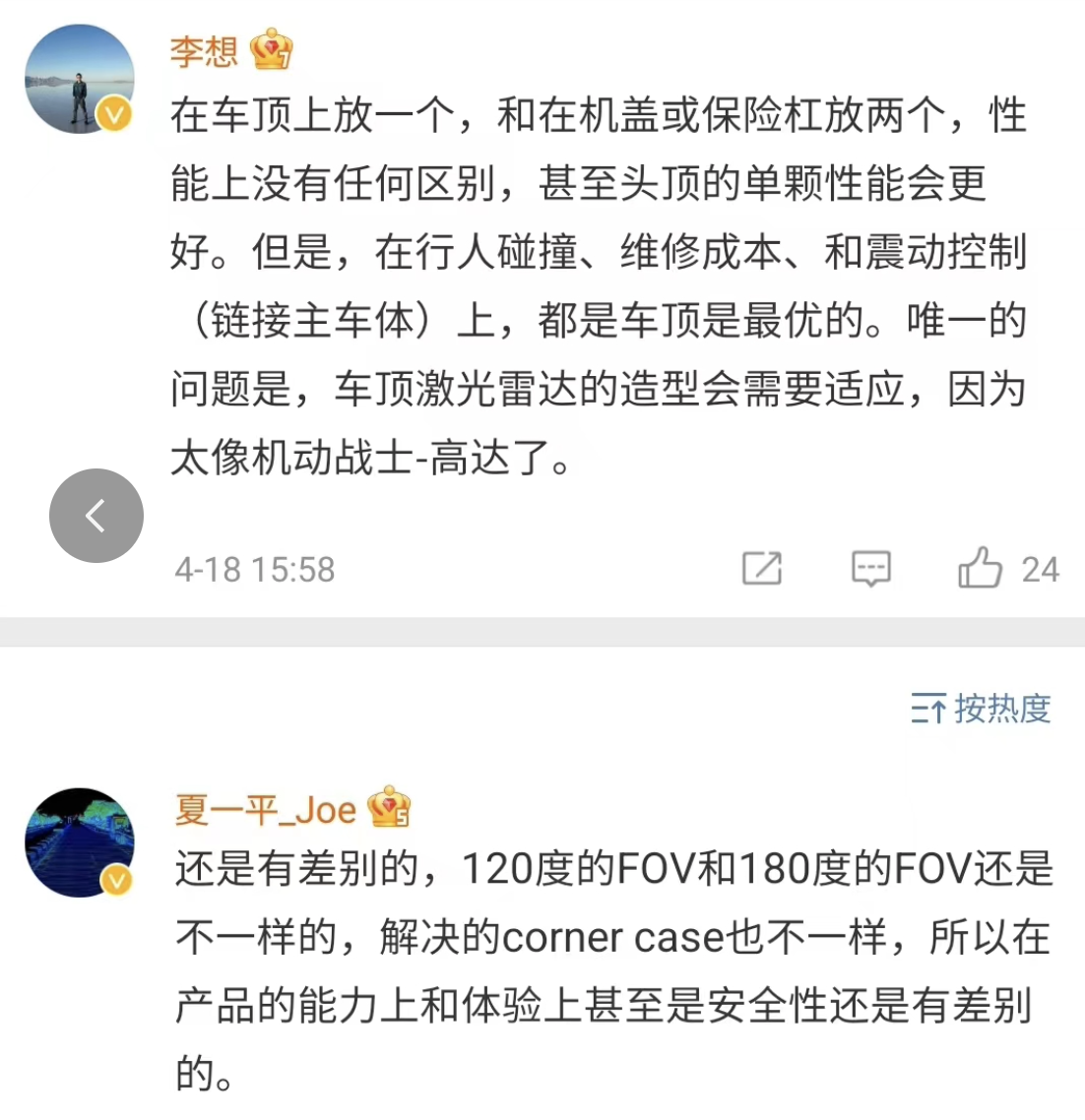
Why two?
The horizontal field of view (FOV) of the Velodyne AT128 is 120°. The combination of two AT128 LiDARs on ROBO-01 forms a 180° horizontal FOV. They are placed on the front compartment of the vehicle. In addition to the aesthetic considerations mentioned above, Xia Yiping emphasizes that it is very important to enhance the vehicle’s perception capability of ghost head scenarios.
Suppose your car is parked in a scene surrounded by pillars. Without a 180° FOV LiDAR helping you to see the vehicles several meters away on the left and right sides, it is actually impossible to do real automatic driving parking in terms of safety. Because your safety level is completely insufficient.
Compared with the top-mounted LiDAR solution, Li Xiang has explained the disadvantages of the LiDAR placed on the front compartment in the screenshot above. One additional difference is that the vertical view angle of the LiDAR placed on the front compartment will be flatter, while the top-mounted solution will be slightly downward. The former has an advantage in the maximum detection distance.
About Fusion Architecture
The three major scenarios for smart driving are generally highways, cities, and parking. Because of the huge differences in these three scenarios, many manufacturers separate them. One of the most important technical information released at the WeRide launch event is that ROBO-01 promises to deliver “triple fusion” smart driving at the time of mass production.
Xia Yiping stated that WeRide has already achieved the fusion of city and highway scenarios as early as December 2021, but at that time, the state was not sufficient for media test drives.
WeRide’s ultimate goal is to achieve smart driving from parking space to parking space.
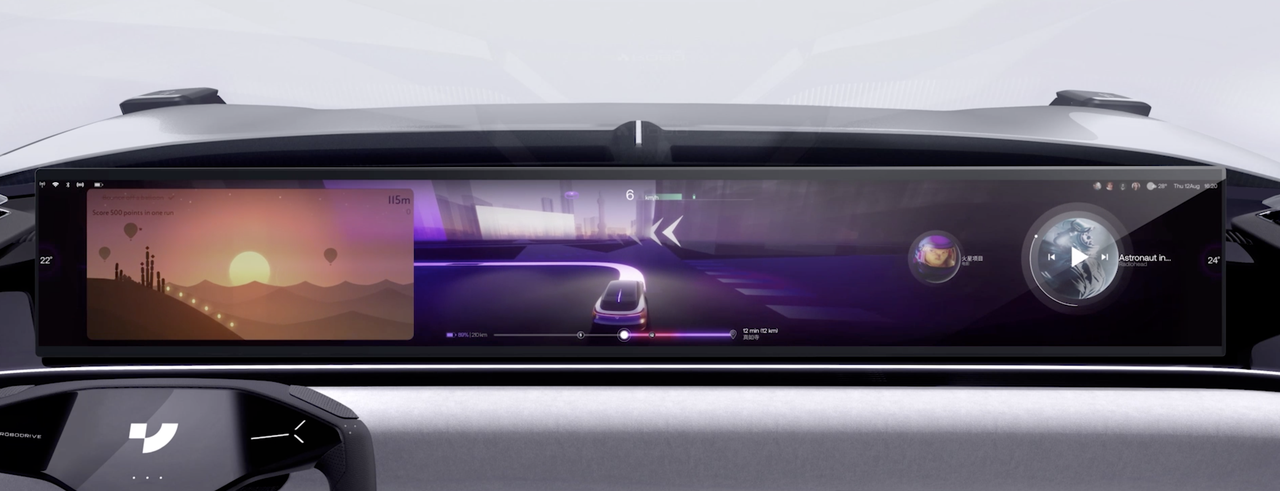 For the electronic and electrical architecture of the vehicle, Jidu named the new car system “JET platform,” which includes:
For the electronic and electrical architecture of the vehicle, Jidu named the new car system “JET platform,” which includes:
-
VDDM vehicle motion controller
-
BGM vehicle domain controller
-
CDC vehicle intelligent cockpit controller
-
ACU vehicle intelligent driving controller
On this set of four-domain control systems, ROBO-01’s in-vehicle communication uses gigabit Ethernet, which has stronger SOA capabilities. If you don’t want to understand these technical terms, you only need to know that these contents mean that the vehicle has a high degree of software definition, and there will be more OTA and customizable processes that can be controlled and customized through a computer. There can be more cooperation between hardware, for example, the 3D assisted driving visualization UI on the ROBO-01 car machine in the conference can be rendered by the performance of the intelligent driving chip.
Another example given by the official is that although the Snapdragon 8295 chip has not yet been installed in the development of the intelligent cockpit, the team can develop under the 8155 architecture in advance and then transplant the content after the hardware is ready. Yes, ROBO-01 will be equipped with an 8295 car machine chip.
In conclusion
Readers who can persist until now are bound to care more about this car than the metaverse. The epidemic this year came very suddenly, and the automotive industry delayed countless press conferences as a result.
Jidu is also one of them. As the CEO of the company, Xia Yiping should be the speaker of the brand’s first new car launch from both emotional and rational perspectives, but the original launch plan under quarantine was naturally impossible. Xia Yiping himself was also alone at home during the epidemic period, and even after the subsequent emergency change of the conference plan, Xia Yiping took the video with his phone at home.
Yes, Jidu did not support the high expectations conveyed during the preheating stage, but to some extent, the unexpected changes in the overall environment did lead to some regretful results.
However, in a press conference interview, there was another piece of information worth noting: Regarding the car’s progress, Xia Yiping said that even if it was affected by the epidemic, the team still tried their best to overcome the difficulties and Jidu has basically not missed a development milestone from March last year to now.
At the end of the article, let’s talk about a question from a consumer perspective: How competitive is ROBO-01?
On the car side, everyone can see the mechanical capabilities of the Geely SEA platform on the Jixie 001, and ROBO-01 does not need to worry too much in this regard, despite being slightly smaller in size. In terms of design, the styling of the concept car is not far off, and the degree of restoration of the mass-produced car in the final stage of the release is indeed good. The cabin and intelligent driving related to intelligence are theoretically the strongest aspects of this car but also the highest threshold and the part that needs to be verified and confirmed in practice.
I have no personal experience or reference for this, but Xia Yiping said so:> We can assure everyone that the intelligent capabilities we just discussed, including the Qualcomm 8295’s first launch in China and the deployed advanced automatic driving in multiple scenarios, will be available in our product when it launches. We will ensure that the related functions released today are provided to consumers as advertised 100% in terms of intelligence. If it can really be achieved, I am still looking forward to the mass-produced version of this car. However, I would like to request that in the next release event, please do not go to the Metaverse to present.
This article is a translation by ChatGPT of a Chinese report from 42HOW. If you have any questions about it, please email bd@42how.com.
